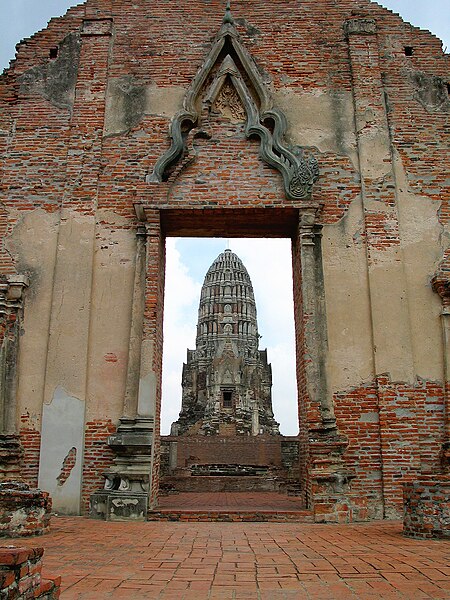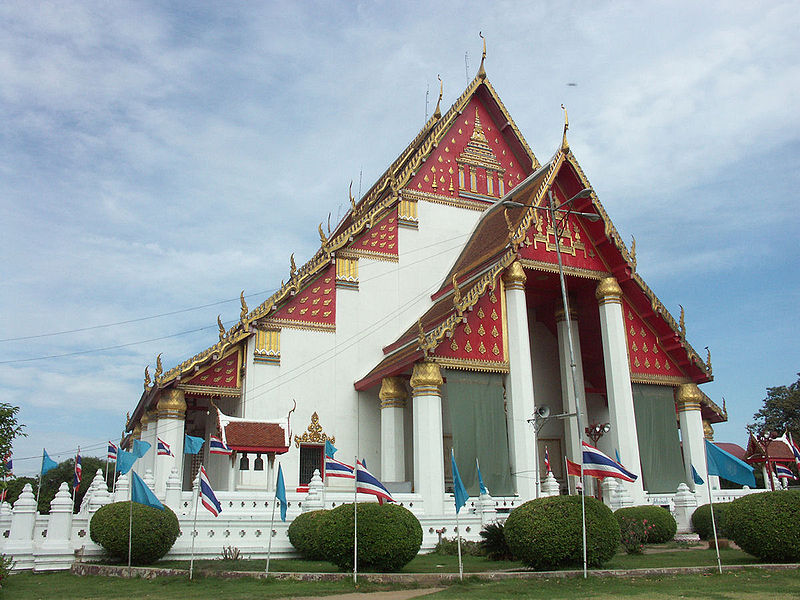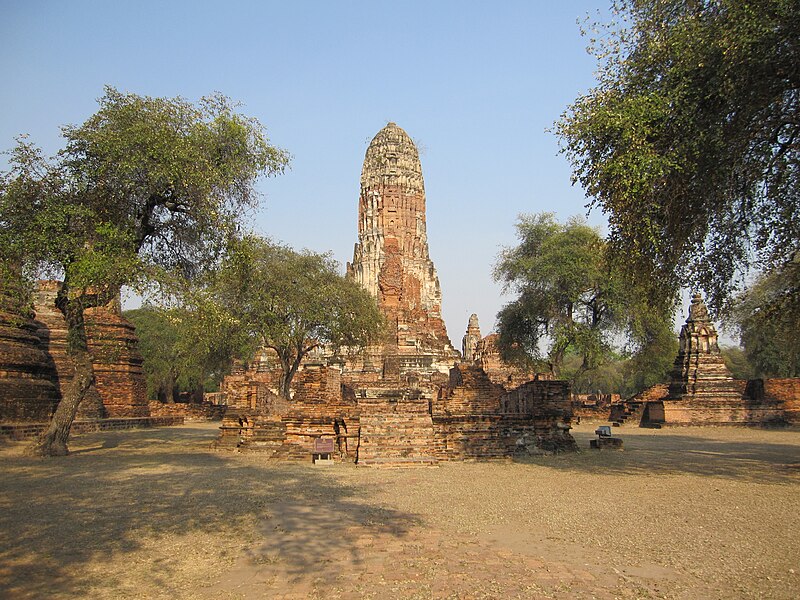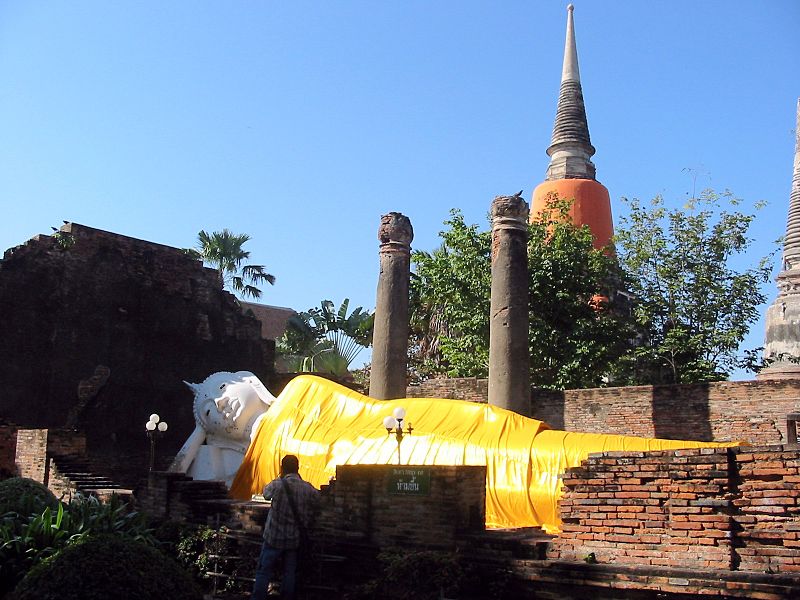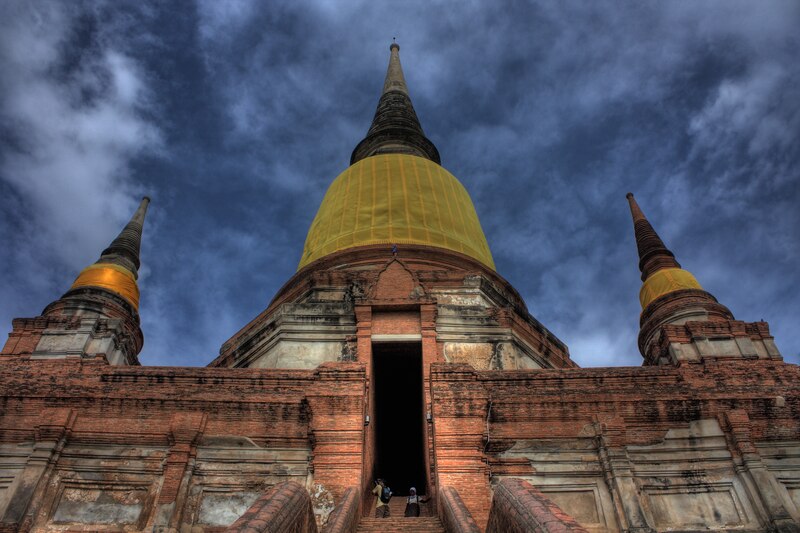The Ayutthaya historical park (Thai: อุทยานประวัติศาสตร์พระนครศรีอยุธยา) covers the ruins of the old city of Ayutthaya, Thailand, which was founded by King Ramathibodi I in 1350 and was the capital of the country until its destruction by the Burmese army in 1767. Ayutthaya Historical Park is the most important tourist site for Thailand tourism outside Bangkok in Central Thailand. Ayutthaya is a one hour drive north from Bangkok.
In 1969 the Fine Arts Department began with renovations of the ruins, which became more serious after it was declared a historical park in 1976. The park was declared a UNESCO World heritage site in 1991. According to "Tourism Asia", thirty-three monarchs including King Rama IV governed from Ayutthaya.
Ayutthaya is important as it was the center of the Ayutthaya Kingdom for 417 years, the creative center for the Ayutthaya style of art, the defining kingdom in Southeast Asia and the start for the subsequent Bangkok Empire which was later founded by the survivors of the Burmese sacking.
To understand Ayutthaya one needs to understand the belief systems, the role of personalities including foreigners, the role of rivers and the canal system, the role of elephants and guns in warfare, the places of cultural heritage, the strengths and weaknesses of Kings and other royal and noble members in Siam society and the role of foreign communities from Japan, the muslim world, Portugal, France, Holland and Britain. Well informed with a sense of history, events and people a trip to Ayutthaya is well worth while.
When taking tours be careful to insist on giving enough time to see these important sites and not be diverted with time wasting diversions. To see everything requires several days. If you seek to see it all in one day a private tour or taxi is needed with an early start. Ayutthaya was an international trading center in Southeast Asia and a visit to the ruins, temples and monuments today will be greatly enhanced by prior reading about the characters who shaped Ayutthaya, their belief systems and fate in history.
This is a very exotic period in Thai history when Kings and their subjects believed Kings were gods, when the Catholic Church from France sought to change Siamese Buddhist minds, when Portuguese traders controlled trade and Portuguese mercenaries influenced war selling their modern methods of warfare and when Asian feudal Kings played war between themselves and with other lives as a game of egos and adventure.
Today, this historic city is a home to numerous magnificent structures and ruins concentrated in and around the city island surrounded by Chao Phraya River, Pa Sak River and Lopburi River. Ayutthaya historical park sites include;
- Wat Mahathat
- Wat Phra Sri Sanphet
- Wat Chaiwatthanaram
- Wat Ratchaburana
- Wat Phra Ram
- Viharn Phra Mongkhon Bophit
- Wat Lokayasutharam
- Wat Yai Chai Mongkhon
- Wat Phanan Choeng
- Wat Phu Khao Thong
- Phra Chedi Suriyothai
- Ayutthaya historical Study Centre
- Japanese Settlement
- Elephant Camp

Japanese village (Thai: หมู่บ้านญี่ปุ่น): Memorial Site of the Old Japanese Settlement in Ayutthaya.
 Ayutthaya was the capital of the Kingdom of Thailand for 417 years from B.E.1893 (A.D.1350) to B.E.2310 (A.D.1767). During this period, in the second half of the 16th Century, foreigners began to come to the Kingdom and gradually in number. These foreigners were traders, missionaries, and some were engaged as volunteer guards of the King. Japanese trade aboard was also boosted when the Japanese Authorities granted official permission to travel for trading purposes by issuing the "Shuin" (Red Seal). Along with the official ships bearing the seal, unauthorized ships also sailed to South East Asia with many Japanese. Among the travelers were those who came to Ayutthaya. The King granted permission to the Japanese, as well as other nationalities, to settle. At that time there were 800 to 3,000 Japanese reported to be living in Ayutthaya.
Ayutthaya was the capital of the Kingdom of Thailand for 417 years from B.E.1893 (A.D.1350) to B.E.2310 (A.D.1767). During this period, in the second half of the 16th Century, foreigners began to come to the Kingdom and gradually in number. These foreigners were traders, missionaries, and some were engaged as volunteer guards of the King. Japanese trade aboard was also boosted when the Japanese Authorities granted official permission to travel for trading purposes by issuing the "Shuin" (Red Seal). Along with the official ships bearing the seal, unauthorized ships also sailed to South East Asia with many Japanese. Among the travelers were those who came to Ayutthaya. The King granted permission to the Japanese, as well as other nationalities, to settle. At that time there were 800 to 3,000 Japanese reported to be living in Ayutthaya. There's nothing left of the Japanese Settlement, so instead, the Japanese government decided to create a Japanese-style park at the location of where the Japanese Settlement probably must have been. The Ayutthaya Historical Study Center started a branch here, a museum about Ayutthaya's foreign relations with Japan and other countries. It starts with an interesting movie of about 15 minutes and then you can explore the museum on your own. It's about all the trading nations that visited this city. Very interesting and definitely gives a good background of the city's history.
Ayutthaya Elephant Camp provides elephant ride attractions. Visitors can ride the friendly and noble animal and traverse the same roads where former kings once walked. The Camp is dedicated to the preservation and welfare of domestic elephants which are paramount to Thailand’s history spanning over 5000 years. The Royal Elephant Kraal has been restored which was once a prime elephant hub from early 1350 to 1900s.
It is home to over hundred elephants where they receive utmost care with a help of expertly designed health system. The Camp encourages tourists for an ‘up close and personal’ experience with Elephants. This includes tons of information and plenty of riding over the course of the stay. A 3-hour trek includes an adventurous tour within the historic Ayutthaya city and lessons on giving instruction to your elephant.
They are provided with a chance to be a ‘mahout’ and get to know a single elephant. Visitors can either rent a tent or experience an authentic Thai style, living side-by-side with elephants or else can opt for a modern style of living. They can even choose to bathe the elephant in the Lobpuri River.
 Elephant Kraal Pavilion (Paniat, Thai: พะเนียด). In the old time wild elephants were searched and chased into the "paniat". This Pavilion was utilized as the royal seat to witness the elephant round up. It is located 4 km. northeast of the town along Highway No. 309. The outlook is a big cage surrounded with logs having, from the front centre, fencing lines of 45 degrees spread out to both sides far away into the jungle area.
Elephant Kraal Pavilion (Paniat, Thai: พะเนียด). In the old time wild elephants were searched and chased into the "paniat". This Pavilion was utilized as the royal seat to witness the elephant round up. It is located 4 km. northeast of the town along Highway No. 309. The outlook is a big cage surrounded with logs having, from the front centre, fencing lines of 45 degrees spread out to both sides far away into the jungle area.Ayutthaya Historical Study Center, Rojana Rd (Rotchana Rd). Interesting museum about the history of Ayutthaya. It's best to visit this museum before heading out elsewhere, as it places the remains into a historical perspective. A big part of the museum is dedicated to Siam's relations with other peoples, but village life, art and culture are also dealt with.
Chao Sam Phraya National Museum. Most treasures of Ayutthaya were stolen, burnt and melted by armies or treasure hunters. Some pieces survived though and are exhibited at this museum. Most of the riches are golden statues found at Wat Ratchaburana and Wat Mahathat.
Sources: http://en.wikipedia.org/wiki/Ayutthaya_Historical_Park,
http://www.bangkoksite.com/AyutthayaPage
http://www.bangkoksite.com/AyutthayaPage
Images: http://commons.wikimedia.org/wiki/Category:Ayutthaya_historical_park


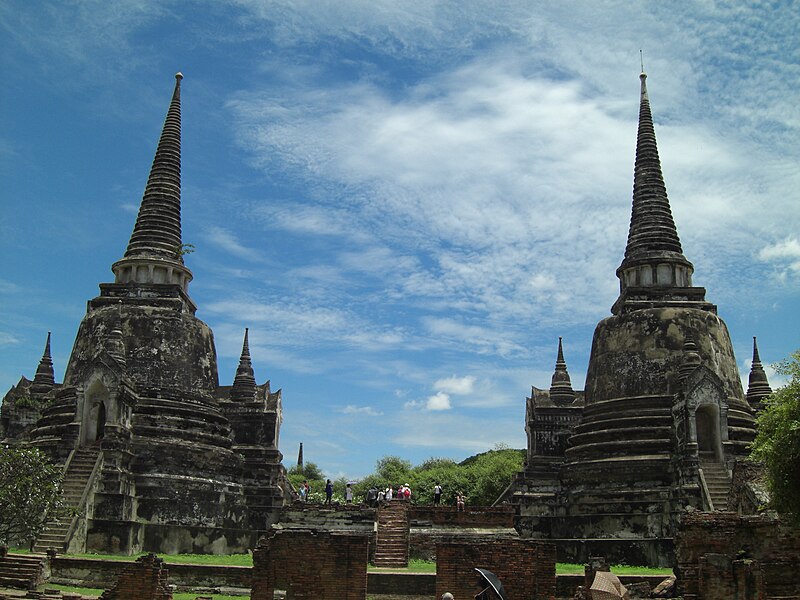

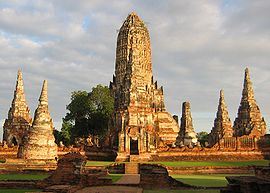
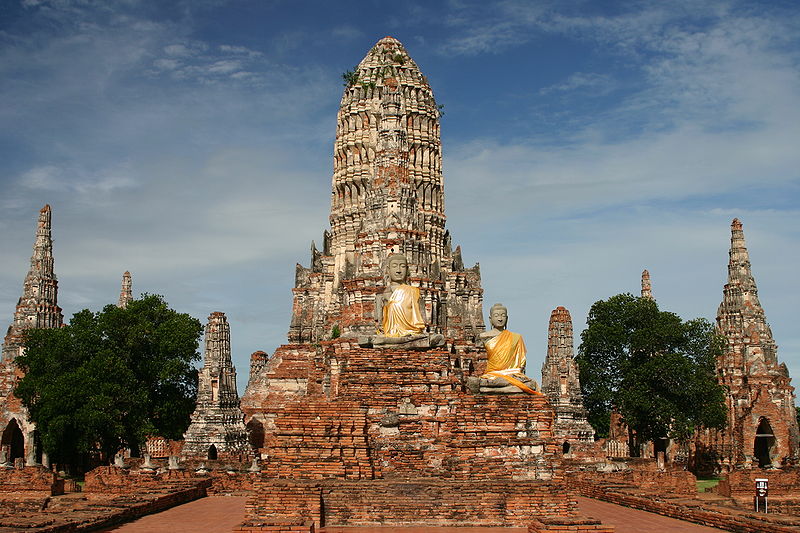






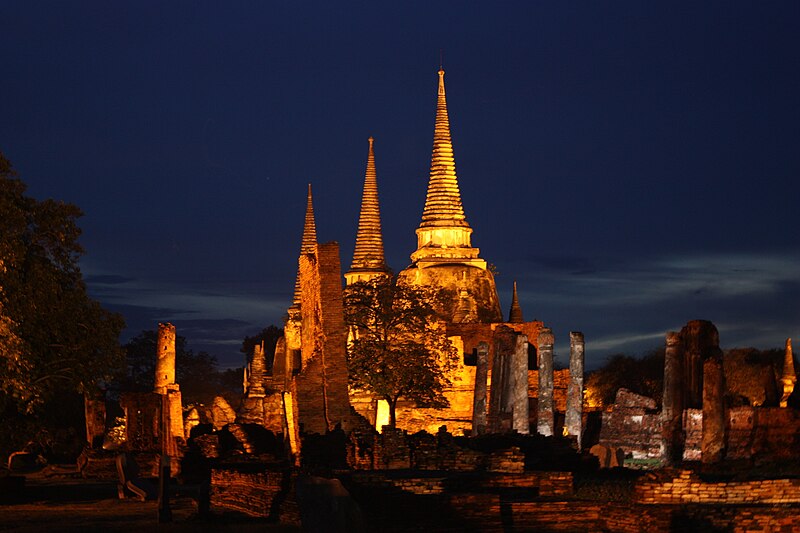




.jpg/800px-Wat_Mahathat_(Ayutthaya).jpg)
03.JPG/800px-Wat_Mahathat_(Ayutthaya)03.JPG)
02.JPG/450px-Wat_Mahathat_(Ayutthaya)02.JPG)




